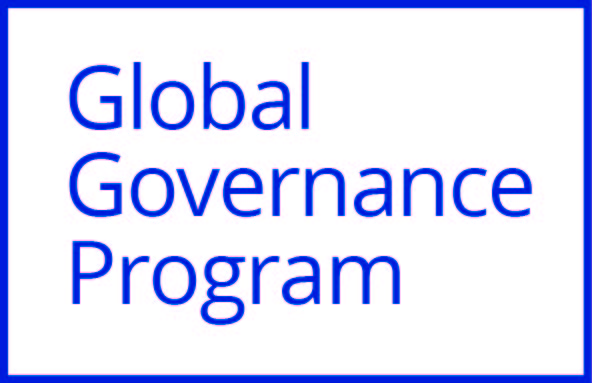
Global Governance Program
Including the G7 Research Group, G20 Research Group,
BRICS Research Group and the Global Health Diplomacy Program

 |
Global Governance Program |
 |
The Trans-Pacific Partnership:
From the G7 in Japan to Canada and the United States
Maria Marchyshyn, G7 Research Group
July 17, 2016
The Trans-Pacific Partnership (TPP) is hailed as one of the most ambitious and comprehensive regional trade agreements ever. It was signed on February 4, 2016, in Auckland, New Zealand, by 12 countries on the Pacific Rim: Australia, Brunei, Canada, Chile, Japan, Malaysia, Mexico, New Zealand, Peru, Singapore, the United States and Vietnam. The agreement will enter into force after the signatories ratify it domestically. If the agreement is not ratified by all parties within two years, it will enter into force after ratification by at least six parties that together have a gross domestic product (GDP) of more than 85% of the GDP of all signatories combined.
Trade was a summit priority at the G7 summit in Ise-Shima, Japan, in May 2016. For decades the G7 has supported trade liberalization in many forms, and the G7 leaders naturally gave their warm support to the TPP at the summit. Most of the section on trade in their declaration addressed the importance of trade in general, however, with an emphasis on the multilateral trade system. The document also stated that bilateral and regional trade agreements such as the TPP are a "useful complement and a building block to the multilateral trade system." The leaders strongly encouraged the TPP signatories to complete the ratification process domestically. Three of the G7 members — the United States, Canada and Japan — are among the most important TPP players.
In Canada, the TPP was negotiated by the Conservative government during the 2015 general election campaign. Former prime minister Stephen Harper strongly supported the agreement. Since then, the change to the Liberal government after the October election brought a democratization to the ratification process, encouraging public debate and commentary on the issue. The new government under Prime Minister Justin Trudeau has made it clear that it is taking its time with the agreement, holding consultations with various parties and town hall discussions. During one public meeting in Toronto, attended by Chrystia Freeland, minister of international trade, the audience overwhelmingly opposed the TPP. People raised concerns about issues ranging from the investor-state dispute mechanism, environmental protection, access to medicine and the protection of intellectual property rights. The issues they raised are real. Yet there are implications if Canada does not sign the TPP. Canada risks its share and competitiveness in the American market, as well as new jobs and opportunities.
Due to the process of globalization and trade liberalization underway for years, the Trans-Pacific Partnership deals more with non-tariff barriers and trade-related issues such as access to knowledge and control over the internet. Is the TPP a good agreement? Analyzing qualitatively or quantitatively the effects a given trade agreement will produce, has always been a challenge. There are winning and losing sectors. Implementation takes place years after signing and trade deals often cause ripple effects through time and various sectors of society. The TPP, similar to many other trade agreements, will have financial, labour, socio-economic, environmental and even democratic implications for a country. Will the TPP come into force? It depends heavily on the vote in the United States Congress. With the looming election in the United States, the timing and outcome of the vote are still unknown.
 Maria Marchyshyn is a researcher for the G7 Research Group, the G20 Research Group and the BRICS Research Group and has been involved with them since 2008. Her work focuses on macroeconomic issues, including international trade and finance and topics regarding the European Union. She has worked on compliance reports, and currently specializes on summit conclusions on a wide range of topics. She has attended the 2014 Brussels Summit as a member of the G7 Research Group field team. Maria is the Vice President of Finance with the Organization of Women in International Trade (OWIT). She has worked in the financial industry and as a researcher at the European Parliament in Brussels. She speaks five languages and is currently learning her sixth, Japanese. Maria completed an Honours degree in International Business Administration (IBBA) with specialization in finance at the Schulich School of Business at York University in 2004.
Maria Marchyshyn is a researcher for the G7 Research Group, the G20 Research Group and the BRICS Research Group and has been involved with them since 2008. Her work focuses on macroeconomic issues, including international trade and finance and topics regarding the European Union. She has worked on compliance reports, and currently specializes on summit conclusions on a wide range of topics. She has attended the 2014 Brussels Summit as a member of the G7 Research Group field team. Maria is the Vice President of Finance with the Organization of Women in International Trade (OWIT). She has worked in the financial industry and as a researcher at the European Parliament in Brussels. She speaks five languages and is currently learning her sixth, Japanese. Maria completed an Honours degree in International Business Administration (IBBA) with specialization in finance at the Schulich School of Business at York University in 2004.
|
This Information System is provided by the University of Toronto Library |
All contents copyright © 2026. University of Toronto unless otherwise stated. All rights reserved.